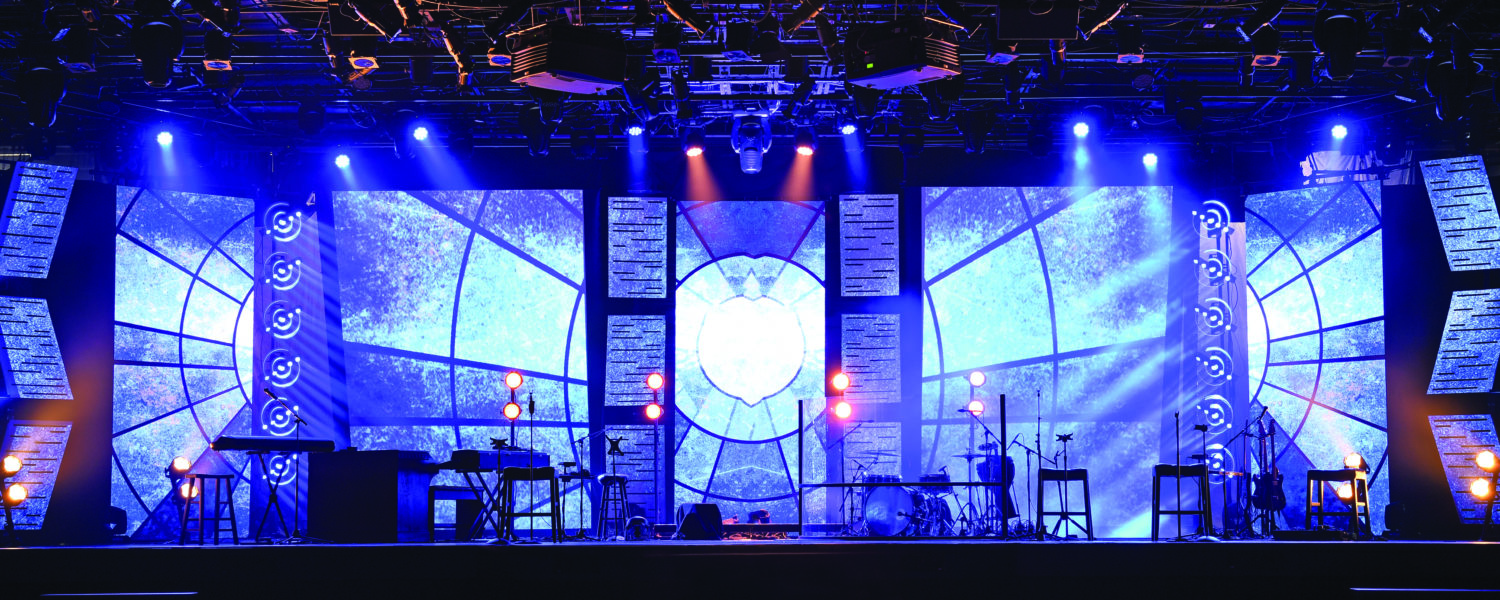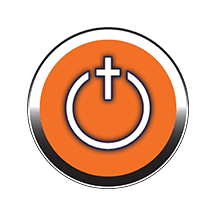By David Henry
Getting started with lighting can be difficult and confusing. If you simply want mediocre lighting, this isn’t the place to be.
However, if you want to create dynamic, interesting and inspiring lighting, I will walk you through exactly how to get started with lighting at your church below.
Even if you need to keep it simple, here, we do it right!
Armed with a million different options and opinions, how do you choose the right lighting, set it up the right way and stay on budget at the same time?
Start with this guide, and you’ll have everything you need to begin with lighting at your church correctly.
In this article, I’m going to introduce the very basics of lighting gear and theory, and then show you some more articles and resources to go deeper in lighting.
The Need for Lighting
The first question I always ask someone who is looking to buy lighting is, “Why do you need lighting?” I don’t do this to agitate, but I really want to know so that I help them fill their need properly.
When it comes down to it, there are two main reasons people want to add lighting to their churches:
- To illuminate – so that the people on stage can be clearly seen from every seat in the congregation.
- To add depth and texture to the stage and room – in order to amplify the message already being given from the stage.
Whether you already have lighting or are just starting out – the first step is this.
Define what you need lighting to do, then learn how to create it and implement to make an impact!
Done properly, adding a few lights can make a huge impact. In fact, I’m going to bet that you can use some of the lighting gear that you may already have to make an impact on your stage – for just the cost of your time!
I don’t want you to buy a single light or even cable until you have defined the why behind your lighting system and what you desire to accomplish.
Lighting can enhance the attention span of audience members, and lighting can make a speaker look great on camera.
Lighting can also add emotion and detail to an otherwise boring stage in a very cost-effective manner.
But – you’ve got to know what you’re aiming to accomplish before you begin!
Lighting also is going to be different for every church and every unique calling. Some churches are going to use a lot of lights, and others will use very little or none!
Lights
When working with lighting, having lights is important! Now there’s a shocker!
If you’ve gone shopping for lights before, you probably know that there is a vast variety of different types of lights. The good news is this – all lights really fit into three “buckets” or types.
1. Hard-Edged lights are the lights that are often referred to as “spots.”
What makes these lights common is their hard-edged beam, which also gives them hard, crisp shadows. In addition, these are the easiest lights to control. Common hard-edged lights include the ellipsoidal, moving head spot and followspot.
2. Soft-Edged lights give us nice, smooth fields of light.
The disadvantage is that they are not as easy to mask off of curtains, screens and other sets that we are trying to avoid hitting!
Still, soft-edged lights are my choice for washing stages with lights, and they make the smoothest, nicest looking wash around! Common soft-edged lights include par cans, scoops, striplights, cyc lights and blinders.
3. Beam lights are a relatively small group of lights.
These are lights that simply give off a very tight beam of light. Common beam lights are moving head beams and pin spots.
LED vs. Conventional Lights vs. Arc Source
Once you determine the type of light that you need, it’s time to figure out the source. LED lights are all the rage, but they’re not the answer to everything or everyone’s needs.
Yes, LEDs are bright, use low power, and can create great amounts of colors. Quality white-source LED units can look just as good as conventional lamps without all the heat or energy use!
But, they’re not always necessary, especially for churches that only use them for a few hours per week. As you begin to figure out what your use will be and how much you’ll use your lights, keep that in mind.
On the other hand, arc lamps inside of moving lights can be very bright, but also very expensive to replace. Today’s LED units are so bright that it rarely makes sense to buy new arc-source moving lights.
Dimmer Packs
If you have conventional lighting, you need to plug them into dimmer packs in order to have intensity control over your lights from a lighting console.
DMX dimmer packs are a necessity if you are using conventional/incandescent stage lights.
LED lights and most moving lights, on the other hand, don’t need dimmer packs – in fact, if you plug them in and dim them, you will fry them! Don’t do that!
Lighting Consoles and Other Control Equipment
The last major piece of gear in your lighting system is the lighting console.
The lighting console controls all of the intensities, fades, and transitions of individual fixtures as well as groups of lights. Many lighting consoles run as PC software and can be run from a dedicated computer or a stand-alone console.
In the past few years, computer-based lighting controllers have really taken the lead when it comes to being the best value.
Besides a lighting console, more complex lighting setups will need DMX splitters, which split the DMX signal to multiple positions.
DMX Signal Cables and Power Cables
The last portion of gear that you need to start a basic lighting system is the cabling.
I recommend using only actual DMX cable for lighting control. Using real DMX cable will help you keep your hair firmly planted on your head and just generally save you a lot of stress!
As for the power concerns, always use a cable that is rated for the maximum output of your dimmer packs or fixtures.
I suggest going with 14AWG cable for most stage applications. This is rated for a 15a load as long as the cable is under 100′, which will work for many applications.
Where Do I Place These Lights?
When we’re lighting in the church, our very first priority needs to be on making sure the people on stage are able to be seen clearly, so that they can best communicate from the stage.
Getting excellent an excellent front light wash is the first step. After that, you can feel free to fill in more lights to backlight, sidelight, and light any sets you may have or to have color over the congregation.
David Henry is the founder of Learn Stage Lighting, www.learnstagelighting.com.












